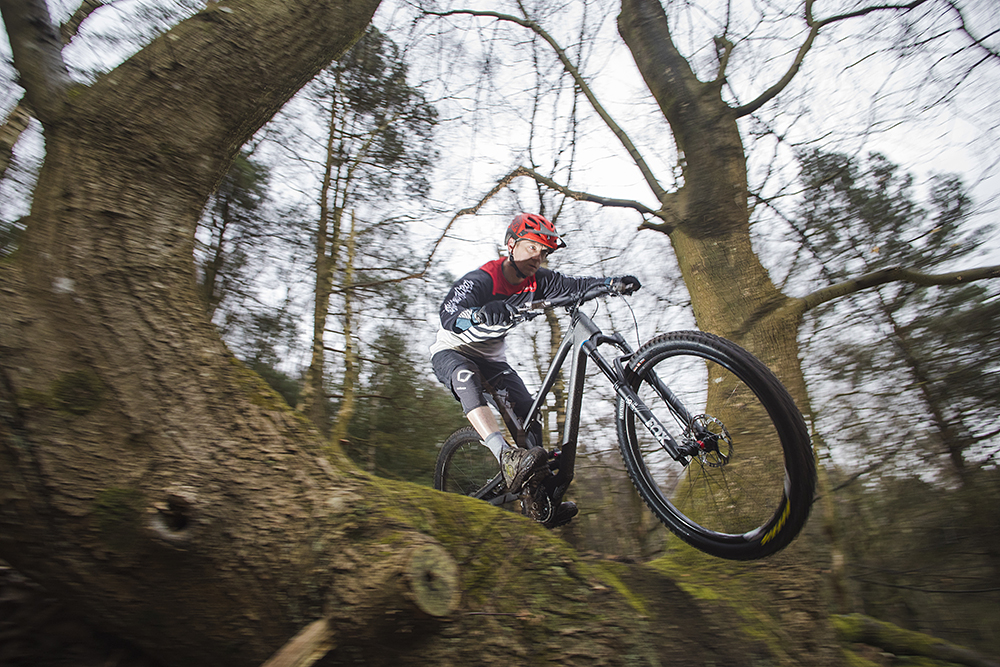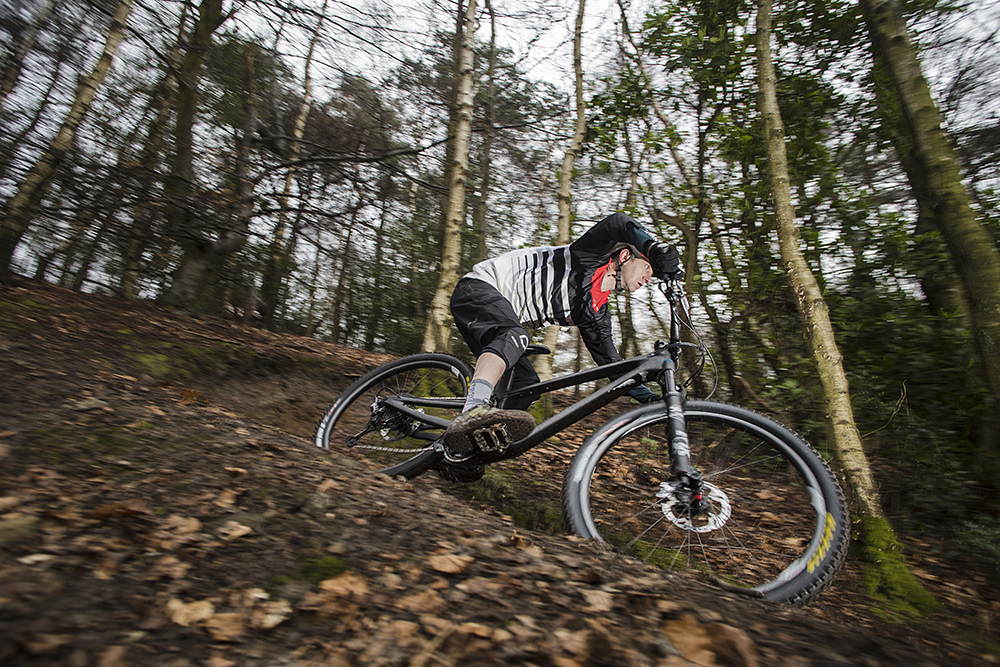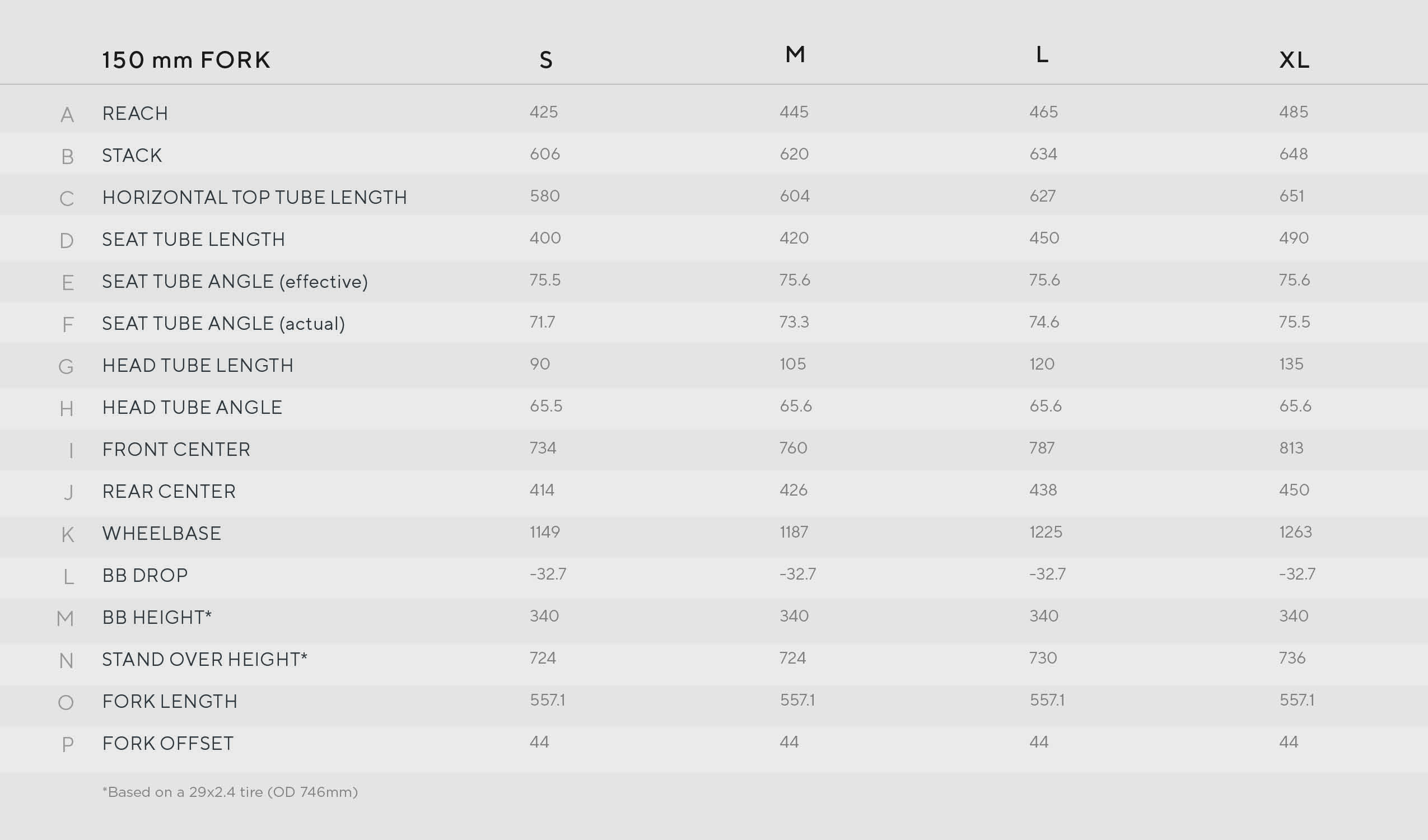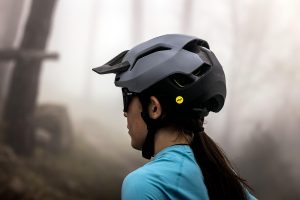A new 29er trail bike that stands out from the crowd: Forbidden's new high pivot Druid sets the cat among the pigeons
Forbidden Druid: first ride review
High pivot idler designs like the Forbidden Druid are nothing new – DH bikes have flirted with them – what is relatively new is seeing one on a trail bike.
>>> The best enduro mountain bikes
Forbidden Druid need to know
- Carbon trail bike with 130mm travel and 29in wheels
- Proportional geometry grows at both ends through the size range
- High-pivot gives rearward axle path for big bump capability
- Idler sprocket manipulates anti-squat and minimises pedal kickback
- Frame weight 3,150g (large)
In 2018, Commencal dominated the World Cup Downhill series with Amery Pierron aboard the new Supreme DH. Sam Blenkinsop found form again on his Norco Aurum HSP and Martin Maes stunned everyone by winning the last round on the latest GT Fury. What all these bikes have in common is a high pivot idler configuration. By that, we mean the pivot is above the chainring with the chain being directed up and over a pulley wheel that is positioned somewhere near the pivot point. Such was the success of these bikes last year, that some rivals were even scrabbling to develop their own versions in a quest to catch up.
Yes, the ARBR Saker and Deviate Guide are high pivot trail/enduro bikes, but until now, all high-pivot bikes have been aimed largely at downhill racing.

Idler pulley sits behind and above the main pivot to tune anti-squat characteristics
Why a high pivot idler?
Multi-ring drivetrains were the main stumbling block to high-pivot trail bikes for many years, but now that wide range 1x systems are the norm, it has finally become viable to build an all-rounder with a high pivot. And the reason they have attained this almost mythical status is all to do with the rearward axle path. Because the pivot is above the chainring, the rear axle will move backwards as well as upwards. Hence the back wheel will move up and over a bump as you roll forwards, which should cause less interruption to your momentum.
By directing the chain around the pivot, it won’t get tugged back when you hit a bump, which causes pedal feedback, and can make the bike difficult to pedal and harsh under foot.

Owen’s CV includes the Norco Range with its Gravity Tune proportional geometry
Who’s behind Forbidden?
Spearheading the Forbidden brand are British engineers Owen Pemberton and Ali Beckett. Until recently Ali was at Nukeproof and Owen at Norco. It was here, while developing the aforementioned Aurum HSP, that Owen first experienced the advantages of high pivot bikes. He was so impressed with the way this design carried speed on the roughest, most unforgiving terrain, that after leaving Norco to set up his own brand, he knew his first model had to have a high pivot and an idler.
What’s the Trifecta system?
While its high pivot configuration has made the headlines, Forbidden has taken a multi-dimensional approach to the Druid. It’s calling this the Trifecta system, and it encompasses the high pivot, the shock linkage (to control the progression) and the idler position. These three elements combine to produce Forbidden’s desired ride quality on the trail.
Without writing an essay, let’s examine each one briefly. The crucial aspect of Forbidden’s high pivot is that it produces a 100 per cent rearward axle path. In fact the rear centre measurement grows by 9mm at sag and 27mm at full travel. This is the lynchpin of the entire design and should give the Druid its claimed ‘unworldly ability to absorb big hits’.
Moving on to the rate control, two short links drive the shock and manipulate the suspension feel. The result delivers, in broad terms, a three-stage response – active at the start of the stroke, stable in the mid-stroke and very progressive approaching full travel. Which, of course, is nothing unique, but in the case of the Druid, definitely rings true out on the trail.
To complete the circle we have the position of the idler pulley. Which, on the Forbidden, is slightly behind and above the main pivot. This manipulates the anti-squat characteristics and almost completely eliminates pedal kickback.

Black beauty
Make no mistake, for a start-up brand, Forbidden has produced a carbon frame of such quality, consideration and beauty that it should make any boutique marque sit up and take notice. There’s a good reason for that. Number one; Pemberton and Beckett wanted to make sure they dotted every i and crossed every t in the development of the Druid. From pivot hardware to frame protection, and cable routing to idler design, this frame couldn’t cut any corners. Secondly, they convinced what is arguably the leading carbon frame manufacturer to actually make them. This is no mean feat when you’re only looking at tens of frames rather than thousands. Indeed many significantly larger and more established brands have knocked on this particular door only to be turned away. So the quality of the finished product entirely reflects the state-of-the-art facility in which it was created.
It’s all about the weight balance
One of Owen’s legacies at Norco was a clever proportional geometry design that allowed the use of longer chainstays on the larger frame sizes and shorter stays on the smaller sizes. It’s an innovation he’s carried across to the Druid – at 414mm (small frame) it has some of the shortest chainstays on any 29er suspension bike. And this is not the only element of the geometry that changes across the size range; seat angles get steeper on the bigger bikes to keep the saddle position of taller riders from ending up too far over the rear axle. Better still, Forbidden publish actual seat angle figures alongside effective numbers, and the former don’t slip below 72, even on the smallest frame size.

The Druid is superbly resolved, wherever you look. Threaded BSA bottom bracket, shock guard and rate control linkage
In the flesh
That’s a lot to ponder before even swinging a leg over the stunning Druid, but it just goes to show the lengths that Forbidden has gone to. And in the flesh it’s a sight to behold. Every nook and cranny feels resolved to a high standard. From every angle it looks aggressive and focused, all the time celebrating its high pivot distinction with that eye-catching chainline.
The size large is of average length, with a 470mm reach (140mm fork), but fits well if you’re of average height. With two sizes below and one size above it’ll accommodate a decent range of rider sizes, but certainly doesn’t push the boundaries of extreme geometry. Standover height is generous, so there is some potential to upsize should you wish.

Stash zone under the down tube guard
Not your run-of-the-mill ride
Around the car park the first quirk of high single pivots became obvious. They’re significantly more difficult to bunny-hop and manual than a low-pivot design. In fact, for the first few attempts to bunny-hop the Druid I couldn’t get it bike off the ground at all. Eventually, by making a more deliberate weight shift and increasing my effort dramatically I was able to get the bike to pop, but nothing like as easily as anything this side of a 25kg e-bike.
Is this a big deal? Yes and no. To me a fun bike is a lively bike, with plenty of pop, whatever the speed you’re riding at. Try to hop a fallen log at walking pace on the Druid, and it will present quite a challenge. For me that’s an integral part of mountain biking. Sure, it doesn’t happen all the time, but it’s something you have to do on occasion. In response, Owen and Ali explain that this is an aspect that improves with time and familiarity, and I can believe that, but it will always be a side effect of the rear centre growth that’s inherent with high single pivots.

Forbidden Druid first ride review
Thankfully, at trail speeds, the Druid is much more dynamic and active. With momentum on your side and the terrain to exploit for extra pop, I had no problem getting it to switch lines, hop depressions and bridge gaps. Indeed it felt completely natural on jumps, and responded well to pumping for both air and speed. And on heavy landings the Druid has one of the most controlled end strokes that I’ve ever encountered on a relatively short travel trail bike. It totally belies the numbers and pushes you to do things you would otherwise avoid on lesser machines. Proof that it’s not what you’ve got, but how you use it.
Forbidden has done a great job with the packaging of the idler. It’s impressively slim and it never felt like we were going to get tangled in the drivetrain. While there is some additional friction in the system when you try and spin the cranks (caused by the idler and the lower roller that’s needed to wrap the chain sufficiently around the chainring), it’s not something we noticed while pedalling. In fact the Druid pedals extremely well – immediately responsive to burst of acceleration and efficient when twiddling up smooth climbs. It finds good traction on lumpy ascents and steep gradients too, thanks to the lack of pedal kickback, steep seat angle and well-proportioned rear centre.
As for the high pivot’s next level square edge performance, during our day on the Druid we didn’t really experience the magical uninterrupted momentum we’d been hoping for. To be fair, the trails we rode probably weren’t rough enough or gnarly enough for the bike to really shine, and on root-infested terrain it may have been a completely different story. There were glimmers of potential however, that gave a tantalising hint at what it might be capable of.
Hit a corner with a positive camber off the brakes and the Druid fires you out the other side with even more pace and a big grin plastered across your face. Through braking bumps on the way into corners, if you can stay off the brakes, you’re treated to excellent grip and stable geometry that feels impressively calm and composed. As such it really rewards short burst of heavy braking, rather than dragging the anchors, as this gives the rear suspension the freedom to really move out of the way of incoming bumps. It’s a technique that requires concentration and practise to develop, but it’s crucial to really make the most of this unique bike.

Test notes
- Removing a small hatch at the base of the down tube accesses a useful storage area
- Production bikes will come with an E13 upper guide in place of the OneUp in the photos
- Frame uses a threaded BSA bottom bracket and comes with a mudguard to protect the shock area
- Measuring sag is hampered by the position of the shock piercing the seat tube
- Our test bike came equipped with a Fox 36 Performance Elite fork with 150mm travel, but you can also run a 140mm fork
- The LG1 lower chainguide runs fairly close to the rear tyre and the two did contact when the bike was loaded up through one particular corner
- Green Moss colourway also available


Green Moss is the alternative colour
Verdict
In a market where new bikes seem to be converging in terms of geometry, suspension performance and aesthetics, the Forbidden Druid makes a bold statement and distances itself from the crowd. It offers a very different ride quality and experience than the cookie cutter mainstream models, and that may or may not suit your riding style and local terrain. If you are surrounded by challenging trails, that constantly chip away at your momentum, where the back wheel is regularly hanging up on square-edge hits and you relish a chess game ascent, then the Druid will feel right at home. If you can adapt your style to take full advantage of the Druid's distinct response and play to its advantages we have no doubt it will be a rewarding partner. If everything was the same, life would be boring, so above all we applaud Forbidden for offering something different and something beautiful.


















